Lucius Fermentation Co.
Vinicola Taro
Chibusque Listan Negro Listan Blanco 2019
Tinto is made from old-vine Lístan Negro with a small amount of co-planted Lístan Blanco, grown in hoyos in a vineyard named “Chibusque” located in central Lanzarote. The grapes were hand-harvested in mid-August, destemmed and skin macerated for 3 days before pressing into steel tank for native yeast fermentation and aged on fine lees for 11 months. The finished wine was bottled without fining or filtration the following July.
Incredibly floral, herbal, and piquant, leaping out of the glass and complimenting its bitter initial attack with plenty of grapey fruitiness and a rooty, roasted carrot umami note. — 5 years ago
Pere Mata
L'Ensamblatge Cava Blend 2010
Nicely aged, Pineapple, lemon, apple, grapefruit pith, toasted nuts.
Brut Nature Cava 2010 Vintage
Cava Gran Reserva DO
Organic, 50% Macabeu, 30% Xarello, 20% Parellada
All three varieties are co-fermented. Primary fermentation is done in oak with some battonage used to develop greater texture. Aged on the lees for over 68 months. Disgorged with zero dosage. Disgorged March 2018.
— 6 years ago
Raventos i Blanc
de Nit Rosé Cava Blend 2016
Founded in 1986 by Josep-Maria Raventos, member of the Codorníu family, creating a small, quality-oriented winery standing apart from the large co-ops. A blend of 40% Xarel-lo, 36% Macabeu, 18% Parellada, 6% Monastrell. Red berry and floral aromas with fine bubbles. On the palate strawberry and cherry with mineral yeasty notes on the lingering finish, good balance. Hand harvested and secondary fermentation rests for 15 months before disgorgement. A nice bargain. Tasting Sample. — 7 years ago
Château Brane-Cantenac
Grand Cru Classé en 1855 Margaux Red Bordeaux Blend 2005
I have a six-pack of this 05. I thought after 10 years in bottle, it would be interesting to check in on its evolution. While tasty, I’ll wait another 8-10 to open another. Even after 2-3 hours in the decanter, it’s still a very young adolescent. On the nose, slightly sour blackberries & dark cherries, dark currants, baked black plum, haunting blue fruits, anise, whiff of spice, steeped tea, dry stones, dry crushed rocks with dry top soil, caramel, vanilla with fresh & dry red florals. The body is thick & full. Tannins are starting to round out. It’s velvety on the palate. The fruits are; bright, fresh & ripe and really show the greatness of the 05 vintage. Dark currants, blackberries, dark cherries, baked black plum, haunting blue fruits, baked strawberries, cherries, raspberries on the long set, dark spice, clay & loamy dry top soil with crushed rocks, dry stones, cigar with ash, graphite, dry stems, slight herbaceous character, mint, used leather, clove, caramel, vanilla, fresh & dry red florals with violets. The round acidity is about perfect. The structure and length are still strong. The balance is in harmony. As for the long finish, it’s lush, ruby, rich and well polished. Photos of; Chateau Brane Cantenac, large wood vats, Henri Lurton and Estate vines. Producer notes and history...Chateau Brane Cantenac began in the early 17th century. At the time, the estate was known as Domaine Guilhem Hosten. Even that far back, wine was produced from the property. In fact, the wine was so highly regarded it was one of the more expensive wines in Bordeaux. It sold for almost as much money as Brane Mouton. This is interesting because of who went on to buy the vineyard in the 1800’s. The Baron of Brane, also known as “Napoleon of the Vineyards”, purchased the Chateau in 1833. At the time of the sale, the estate was called Chateau Gorce-Guy. To get the funds needed to purchase the Margaux vineyard, the Baron sold what is now called Mouton Rothschild, which was at the time of the sale, known as Chateau Brane-Mouton. Not such a good move with hundreds of years in hindsight! In 1838, the Baron renamed property taking his name and the name of the sector where the vineyards were located and called it Chateau Brane Cantenac. The Chateau later passed to the Roy family, who were well-known in the Margaux appellation in those days, as they owned Chateau d’issan. Moving ahead to 1920, the Societe des Grands Crus de France, a group of merchants and growers that owned several chateaux located in the Medoc including; Chateau Margaux, Chateau Giscours, and Chateau Lagrange in St. Julien, purchased Chateau Brane Cantenac. Five years later, M. Recapet and his son-in-law, François Lurton, took over Brane Cantenac along with Chateau Margaux. Lucien Lurton (the son of François Lurton) inherited Brane Cantenac in 1956. Today, the estate is still in the hands of the Lurton family. Brane Cantenac is owned and run by Henri Lurton. After being given the responsibility of managing Brane Cantenac, it was under the direction of Henri Lurton that large portions of the vineyard were replanted. Vine densities were increased, the drainage systems were improved and the plantings were also, slowly changed. The vineyard of Brane Cantenac is planted to 55% Cabernet Sauvignon, 40% Merlot, 4.5% Cabernet Franc and .5% Carmenere. Carmenere was used for the first time in the 2011 vintage. The only other Chateau I know that still uses Carmenere is Clerc Milon. The 75 hectare Left Bank vineyard of Brane Cantenac is essentially unchanged since it earned Second Growth status in the 1855 Classification. At least that is the case with the 45 hectares used to produce the Grand Vin of Brane Cantenac. Those 45 hectares are planted surrounding the Chateau. Those vines are located just in front of the Cantenac plateau and are the best terroir that Brane Cantenac owns. They have other parcels, which are further inland and much of those grapes are placed into their second wine, Le Baron de Brane. Those additional hectares can be divided into 3 main sections. Behind the Chateau, they have 15 hectares of vines on gravel and sand, 10 hectares across the road with sand, gravel and iron and a 13 hectare parcel with gravel called Notton, which is used for their second wine. The vineyard is planted to a vine density that ranges from 6,666 vines per hectare on the plateau and up to 8,000 vines per hectare for the vines located behind chateau, in their sandier soils. The higher levels of vine density are always found in the newer plantings. The terroir of Brane Cantenac consists of deep gravel, sand and clay soil. Experiments in the vineyards are currently looking at becoming more organic in their vineyard management. Today, more than 25% of Brane Cantenac is farmed using organic farming techniques. It is expected that over time, the amount of hectares farmed with organic methods will be increased. Brane Cantenac has gone through 2 relatively recent modernization’s in 1999, when they added began adding the first of their smaller vats to allow for parcel by parcel vinification and then again in 2015 when they completed a much more complete renovation of their cellars and vat rooms. While Brane Cantenac is a traditional producer, they are no stranger to technology as they were one of the first estates to embrace optical grape sorting machines. In very wet vintages, they can also use reverse osmosis. To produce the wine of Chateau Brane Cantenac, the wine is vinified in a combination of temperature controlled, traditional, 22 oak vats, 18 concrete tanks and 20 stainless steel vats that vary in size from 40 hectoliters all the way up to 200 hectoliters, which allows for parcel by parcel vinification. 40% of the fermentation takes place in the oak vats. The oldest vines are vinified in vats that are selected to allow for separate parcel by parcel vinification. The younger vines are vinified more often together in the same vats. However, the Carmenere is entirely micro-vinified, meaning that those grapes were completely vinified in barrel, using micro-vinification techniques. This can also happen because the amount of grapes produced is so small. Some vats can be co-inoculated, meaning they go through alcoholic fermentation and malolactic fermentation simultaneously. At Chateau Brane Cantenac, malolactic fermentation takes place in a combination of French oak tanks and barrels. The wine of Brane Cantenac is aged in an average of 60% new, French oak barrels for 18 months before bottling. The initial 2 months of aging is done with the wine on its lees, which adds more depth to the wine. There second wine is Le Baron de Brane. Le Baron de Brane is not new. In fact, previously, the second wine went under the name of Chateau Notton, which took its name from one of the main parcels where the grapes were planted. During the late 1950’s and into the 1960’s, having a second wine was important as the estate declassified 3 vintages, due to extremely poor, weather conditions in 1956, 1960 and 1963. Production of Chateau Brane Cantenac is about 11,000 cases per year. — 8 years ago
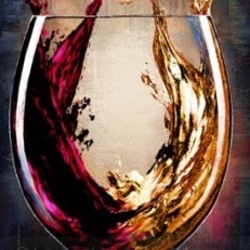
Iria Otero
Cosco Ribeiro White Blend 2018
Characteristics
DO. Ribeiro
Treixadura, Godello, Loureira.
Alcoholic degree: 12.50% Vol.
Total Acidity 5.92 gr / l. In Tartaric.
PH: 3.51
Free Sulfur 12 mg / l.
Elaboration
Fermentation and aging for 12 months in 650-liter chestnut barrels. Bottled on October 12, 2019.
Production: 735 Bottles.
Sommelier's advice
It came from the Vieite vineyard at an altitude of 250 meters. The varieties are planted together as is customary in the Ribeiro and co-ferment to give the wine richness. — 4 years ago
Ruth Lewandowski Wines
Feints Cuvée Zero Foxhill Vineyard Red Blend
Such a lovely wine. Soft tannins, co-fermentation of Italian reds with Arneis. This is the life partner we all want. It’s sassy, humble, and chill. Sign me up — 5 years ago
Johannes Zillinger
Revolution Weinviertel Chardonnay Blend
Day 1: beeswax, almost-burnt toast, Granny Smith apples, Parmesan tang and ginkgo that comes and goes on the nose. Acid on the nose. Spice on the front of the mouth, like cayenne, soft pears or red skinned soft fleshed apples, lemon juice minerals. Like a champagne without the bubbles. Not super long, but interesting.
It kind of tastes like one of those lemon cayenne cleansing drinks, but super refined.
Day 2: like a strange mix between the honeyed notes of a Chenin with the citric acidity of Chardonnay and Riesling. It calmed down a bit and became more electric, like putting it through a tube compressor.
50% Chardonnay partially fermented (carbonic) in amphora followed by co-fermentation with Scheurebe, and blended with Riesling from a solera of vintages 2013-2015 aged in used wood, unfined, unfiltered with no sulfur added. — 6 years ago
Dirty & Rowdy
Unfamiliar Mourvedre 2017
Via Brooklyn Wine Exchange: Hardy Wallace is a bit of a superstar in the "New California" wine scene. He began his wine career in Atlanta, publishing a blog on the subject called Dirty South Wines. In 2009, he won a high-profile contest held by Murphy-Goode Winery in Sonoma, called "A Really Goode Job." Hardy beat out 2,000 other applicants for this stunt-job, acting as a sort of social media/pr coordinator for the winery. Upon completion of his six-month contract, he went to work for several legendary winemakers in the valley, including Cathy Corison (Chappellet, Corison) and Ehren Jordan (Turley, Failla). During this time, Hardy and his wife Kate also partnered with friends Matt and Amy Richardson to form a small label called Dirty & Rowdy Family Winery. For their first vintage, they purchased one ton of Mourvredre, the semi-obscure Provencal and Spanish variety that is rarely seen outside the context of a red blend in California.
Knowing that Dirty & Rowdy could distinguish itself in a ocean of Napa Valley Cabernet Sauvigon with this curious and brawny grape, Hardy & Co. quickly bet the farm on Mourvedre, as a vehicle to express different styles of winemaking as well as the terroir of multiple regions within California. Flash-forward to current day, where Dirty & Rowdy has become the king of California Mourvedre, bottling multiple cuvees each year that sell out almost immediately.
Dirty & Rowdy is a well-known emblem of the domestic natural wine scene as well. Hardy buys almost exclusively from organic growers, and doesn't filter, acidify, or alter his wines in anyway. Sulfur use is extremely low, and the overall philosophy is to be as hands-off as possible.
That is until 2017. The fact that Dirty & Rowdy has a wine to present at all for this vintage is a miracle. Flashback to mid-July last year. The growing season wasn't going all that well. Tremendous heat spikes created growth problems at almost all the vineyards Hardy sources grapes from. It's hard enough to monitor vine issues on one vineyard, let alone almost a dozen parcles scattered around six counties stretching from the Central Coast all the way out to the Sierra Foothills. A case of shingles went from bad to worse, spreading to his eyes. Hardy completely lost his vision for three days. Kate's brother Angus, a ski instructor and artist from Aspen, drove out to lend a hand with the impending harvest. On his way out, he was involved in single-car crash along a treacherous stretch of interstate and tragically lost his life.
Then the fires started.
Hardy and Kate, like many other producers who make wines in communal "crush" facilities located in urban areas around Sonoma and Napa, had hoped to ride out the fires and continue their wine production. The fires spread rapidly and threatened both their house and their winery, located in Petaluma. They left their wine in the midst of alcoholic fermentation, one of the most crucial and stressful times of the year for a winemaker even in the best of situations. When they were able to return eight days later, the winery was luckily undamaged. The wine, however, didn't fare so well. most vats had experienced "stuck fermentation," meaning that the native yeast died before eating all the sugar. Hardy, like most forward-thinking American winemakers, is a firm believer in natural fermentation. This no-brainer aspect to his wine was now an virtual impossibility. Plus, the vats contained high levels of volatile acidity or "VA," which creates an unfavorable "nail polish" quality in wine. A little bit of VA can give lift and energy to wine. Too much, however, renders the wine undrinkable.
At this point, Hardy thought to sell all the wine off in bulk for pennies on the dollar. Or perhaps create a second label to distance himself from what was surely going to be an atypical wine. Instead, he decided to combine almost every vat of his Mourvedre for the vintage (including lots of his most expensive fruit), and go into the "Unfamliar" territory of interventionist winemaker. Stuck lots were restarted using a variety of methods. When the wines finally fermented to dryness, he borrowed a "reverse osmosis" filtration system, perhaps the most modern of all the modern wine doohickeys. This contraption allowed Hardy to literally suck out the volatile acidity to bring it down to a pleasing level, as well as moderate and stabilize the alcohol. Then he filtered the wine. Basically, he did all the things he never thought he would ever want to do to wine.
The resulting wine is something that we have never seen before, both from Dirty & Rowdy and the Mourvedre grape, in general. Much of the wine fermented carbonically in tank, so the expression is much closer in style to Beaujolais than Bandol. It is so light on its feet, in fact, that Hardy believes this wine could take a serious chill. (Hence the reason we are trying to get you to try a California Mourvedre in the middle of a sweltering summer!) The tannins are pretty much non-existent, and the fruit is pretty and pure. There is a lovely little purple flower note in the middle of the wine, and a hint of smokiness on the finish (smoke taint from the fires? Or is this just some sort of phantom association because of the context? Either way, it adds depth and personality to this gorgeous wine.)
Since their "Annus Horribilis" of 2017, order and peace has been restored in Hardy & Kate's life. Their daughter Maple turns two in a few days. They celebrated the free-spirited life of their brother with scores of his friends and ski students at Aspen Mountain's opening day last November. The motto of the celebration, "Live Like Angus," has inspired hundreds and hundreds of beautiful social media posts. And this year's Spring release of Dirty & Rowdy wines from earlier vintages has quickly sold out around the country, gobbled up by ravenous collectors, restaurants, and retailers (like this one.)
But to Hardy, this "Unfamiliar" wine, which doesn't fit stylistically or financially into the rest of the D&R portfolio, will always represent something completely different: The best of a unthinkably bad situation. "It took a lot of blood, sweat, and tears to get that wine into bottle," Hardy wrote to us, just this morning. "Fortunately, it is fresh, delicious, soulful and somewhat of a Phoenix Rising from 2017. Though it is our least expensive wine ever, it is the wine I am most proud of." — 7 years ago
Leftie Wine Co.
Flight of Fancy Red Blend
Our highly flavorful Red Blend starts with a fine wine that undergoes a secondary fermentation with raspberry juice. The result is an elegant full-bodied wine with notes of red berries with light oak and a velvety smooth finish. — 5 years ago
Turtle Rock
Westberg Red 4Hearts Vineyard Zinfandel Tempranilllo 2017
Jeb 96 Parker/lisa 95 Not bad for 🌶🔥🌮 Saturday
Its the Westberg blend
Winery notes,,
76% Zinfandel, 24% Tempranillo
Vineyard
4hearts Vineyard
Fermentation
Zinfandel was co-fermented with the Tempranillo
Aging
22 months in 60% new French Oak
Notes
This blend is ruby in color with a fresh nose consisting of basil, toasted oak, and spice. Silky on the pallet with fresh intricate red fruit and white pepper with a meaty and savory back pallet finish. — 6 years ago
Enfield Wine Co.
Heron Lake Vineyard Chardonnay 2013
Massive, perfumed nose of 100 scents. Full mouthfeel with some tannin, so I get the joy of the fermentation happening on skins. Beautiful and begging for food. — 8 years ago
KC Wine Co
KC Labs Mourvedre
Light and fruit forward, watermelon jolly ranchers but way better. carbonic fermentation. — 8 years ago
Cruse Wine Co.
Rorick Vineyard Chardonnay 2015
Another solid effort from Michael Cruse! Chardonnay from the Rorick Heritage Vineyard in the Sierra Foothills. Pours a medium (-) straw-gold hue. Medium/medium (+) concentration of aromatics of bruised yellow apple, fresh pineapple, honeysuckle, wet stone, some bread dough and aged cheese rind leesiness, creme fraiche, and a bit of slight savory, almond-y oxidative character. On the palate, there's more yellow apple and pineapple that is joined by a bit of ripe Bosc pear, along with more wet stone, aged cheese rind, honeysuckle, and a slight fennel edge to the finish. Medium to medium (+) acid, dry, medium bodied with lush texture from neutral oak, malo, and lees. There's also the slightest bit of phenolic edge because the juice is left on skins overnight prior to fermentation. Alcohol is medium (+) and is a bit too noticeable on the palate for my tastes but is still gentle enough to overlook. Wish there was a bit more acid but there's still definitely enough to at least keep it in balance enough. Overall, pretty good stuff and interesting for sure; if there's one word you *can't* use to describe Michael's wines in general, "boring" is that word. — 8 years ago
Waters
Washington State Rosé 2016
60% Syrah 40% Viognier co-fermentation, "straight from the press with no additional skin time". Pale white tinted with gold and pink. Herbal and melon notes in nose. Watermelon, perfumed floral and lemon pith with spritz in mouth, cherry with length and black pepper notes in finish. Slight astringency on front of tongue. Easy drinking, light and dry but good acidity. Exciting and different, worth seeking out — 8 years ago

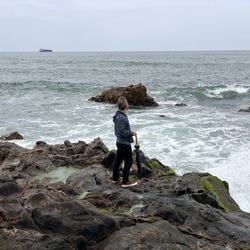
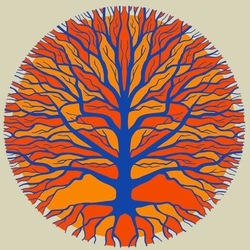




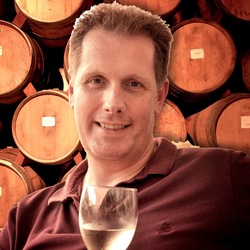




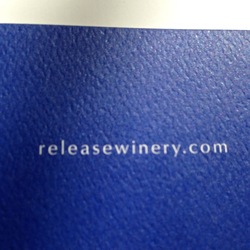





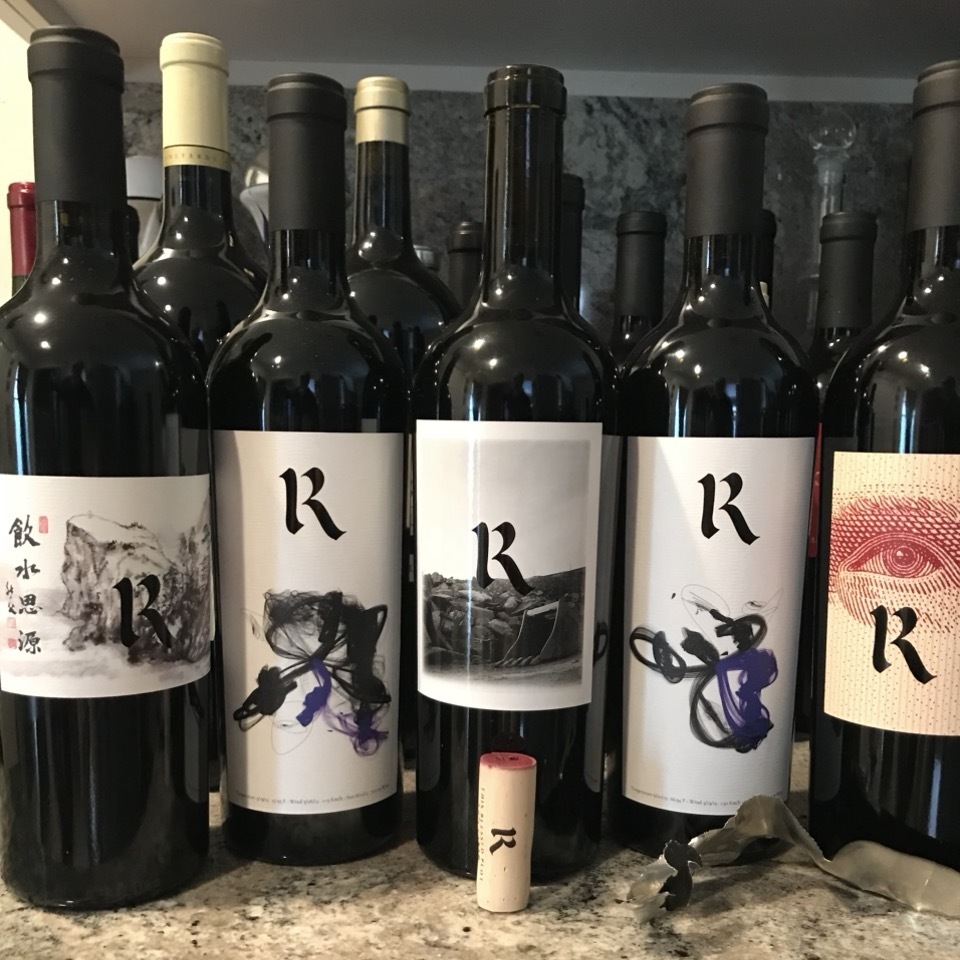



Maggie Harrison
whoa. native fermentation. super cool. every varietal that is legally allowed to be produced in Alsace. picked the same day and co- fermented. all about bio-diversity. own rooted. damned cool shit. — 4 years ago